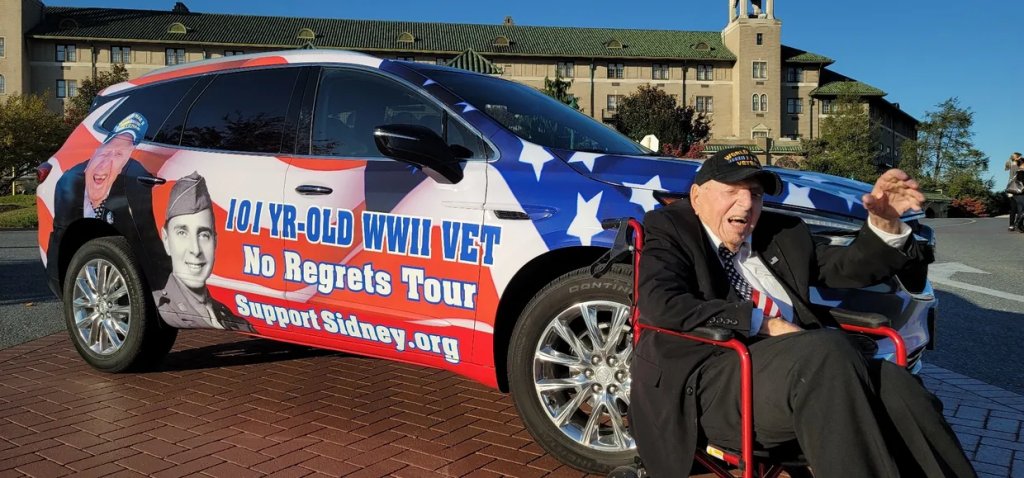Sidney Walton was born on February 11, 1919, on Manhattan’s Lower East Side. In March 1941, before the attack on Pearl Harbor and America’s official entry into WWII, Walton left City College of New York to join the military. He wanted “to join the Army to fight Hitler,” he famously said. Walton trained at Fort Dix, New Jersey and was subsequently stationed at Fort Jackson, South Carolina, Camp Toccoa, Georgia and Camp Sibert, Alabama.

Walton was then sent to Virginia Polytechnic Institute to study chemical warfare. After graduating with a chemical engineering degree, he was sent overseas to the China, Burma, India theater of war. Following the war’s end, Walton returned to academia and taught geology at Duke University. He later pursued graduate work in the subject at Yale. In 1953, Walton met his future wife, Rena Bell, on a blind date.
The next year, Bell and Walton married. In 1955, the couple had their first child, Paul Adriel. The family moved to Bangor, Maine, Rena’s hometown, where Walton worked at Dow Air Force Base. There, the couple had two daughters, Judy Roanne and Eloise Lenore.

In 1960, the family moved west to San Diego, California where Walton worked at Naval Air Station North Island. In 1982, Rena died of cancer. Walton retired shortly afterward and remained in San Diego with his children.
In 1989, starting with the fall of the Berlin Wall, Walton began traveling with his son. On their travels, Walton became recognized as one of the few remaining WWII veterans. This led him to meet such notable people as the Dalai Lama, Prince Harry and former President George H. W. Bush.

In 2018, shortly after his 99th birthday, Walton began the “No Regrets Tour.” His goal was to tour the nation, visit all 50 states and meet all 50 governors to raise awareness for and encourage people to meet the dwindling population of WWII veterans. He was inspired by his own regret of not meeting Civil War veterans at the 1939 World’s Fair in New York. “That was the biggest regret of my life,” he used to say.
Walton started the No Regrets Tour with Rhode Island Governor Gina Raimondo on April 24, 2018. When word of his tour spread, Walton was honored at a host of other places and events. He met the President in the Oval Office, sat behind President Trump onstage at the 75th Anniversary of D-Day, took part in the 2020 Super Bowl coin toss, had dinner with Chairman of the Joint Chiefs of Staff Gen. Mark A. Milley, and even had Fort Knox opened up to him.

On September 28, 2021, Walton met his 40th governor, Oklahoma Governor Kevin Stitt. Sadly, this would be his last governor. Four days later, Walton passed away on October 2, 2021 at the age of 102.

Walton’s family encourages the public to pay him a final tribute as he makes his final journey from Los Angeles to San Diego. The schedule of the 125-mile procession is as follows:
10:30 am – Motorcade departs Pierce Brothers Valhallah Mortuary, 10621 Victory Blvd, North Hollywood, Los Angeles. The procession will travel down I-5 to San Diego. Participants should arrive early, and can join for however far they want.
1:00 pm – Motorcade arrives El Camino Memorial Park, 5600 Carroll Canyon Road, Sorrento Valley, San Diego.
1:30 pm – Visitation at Chapel of the Bells. Open casket. Commemorations. Open to the public.
2:45 pm – Sidney transported to nearby gravesite for burial next to his deceased wife, Rena
3:00 pm – Private graveside service and burial
Walton’s passing is a somber reminder that the surviving veterans of WWII are few and far between. These men and women who served their country in one of the world’s darkest hours deserve our undying gratitude. More importantly, they should be met as people with stories worth listening to as Walton wanted.


